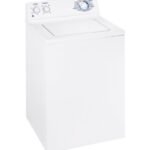Abstract
In this article I will cover issues for my home town newspaper on large scale economic issues. The news article will include issues such as why the U.S. has run a merchandise trade deficit since the 1980’s; the current deficit problems we are facing; the trade of the international investment position of the U.S.; current account related to the country’s business cycle. We will also take a look at the country’s net financial inflow and its current account. Review the U.S. adjustments for the balance of payment issues.
Hometown Newspaper
Large Scale Ecomonic Issues
1980’s Trade Deficit
Beginning in the early 1980’s the U.S. trade deficit reached peaked levels after years of the U.S. of surplus. Throughout the 1980’s trade deficits have spawned worry about “unfair” foreign trade barriers, lost jobs, and America’s ability to compete in the global marketplace.” (Griswold, 1998) As Americans consume more foreign products and invest less, we will continue to see the trade deficit grow. (Griswold, 1998)
The graph below outlines the relationship between Trade Balance and U.S. Recessions from 1960 to 1995.
Current Deficit Problem –
Is the trend of the international investment position of the U.S. problematic
The trade deficit is not geographical balanced. “The U.S. trade and current account deficits are approaching $600 billion and have risen by almost one full percent of GDP in five of the last six years. The net foreign debt of the United States now approaches $3 trillion and is growing by 20-25 percent per year.” (Bergsten, 2003) The reason for the deficit is the high oil prices and imports from China. The America public demands that we continue to have cheaper products produced by foreign countries, yet are the first to complain when typical American jobs are moved or outsourced to other countries.
“Imports of high-tech goods from China were responsible for $36 billion of the $37 billion U.S. deficit in ATP’s in 2004” (Scott, 2005) China’s refusal to increase it’s currency is expanding the bilateral gap. (Scott, 2005)
What does this mean for the United States? The United States must borrow from abroad to finance it’s deficit. Due to the deficit the “All American” dollar is not so powerful. Foreign lenders are going to be less willing to supply credit. (Scott, 2005) Forecasters predict this will get worse before it gets better.
U.S. Financial Inflow and its current account
The U.S. current account is in the negatives according the BOP data of 2000. The country has more money going out then coming in to the country. Capital from abroad is invested in this country to balance the account out. Because these funds are an investment there is an implied return. This is then recorded as a credit to balance the account out. (Heakal, 2003)
Conceptualized Conclusion
According to Heakal, the IMF and World Trade Organization historically supported free trade in goods and services and are now faced with the complexities of capital freedom. Experience has proven, however, that without any controls a sudden reversal of capital flows can not only destroy an economy, but can also result in increased poverty for a nation. (Heakal, 2003)
Reference List
Griswold, Daniel T., April 20, 1998, “America’s Maligned and Misunderstood Trade Deficit”, Center for Trade Policy Studies, [Electronic Version] retrieved on November 7, 2005 from http://www.freetrade.org/pubs/pas/tpa-002.html
Bergsten, C. Fred, November 24, 2003, Institute for International Economics, “Should G7 Policy Coordination Be Revived?” Originally published in The International Economy, Fall 2003, November 24, 2003, [Electronic Version] retrieved from Institute for International Economics on November 4, 2005 from http://www.iie.com/publications/papers/paper.cfm?ResearchID=275
Scott, Robert E, Research assistance from David Ratner, February 2005, “Trade Picture”, The Economic Policy Institute, [Electronic Version] retrieved on November 4, 2005 from http://www.epinet.org/content.cfm/webfeatures_econindicators_tradepict20050210
BOP Data – 2000, Source: Economic Report of the President 2002 [Electronic Version] retrieved on November 7, 2005
Heakal, Reem, July 2, 2003, “Understanding the Capital and Financial Accounts in the Balance of Payments”, Investopedia.com [Electronic Version] retrieved on November 7, 2005 from http://www.investopedia.com/articles/03/070203.asp


